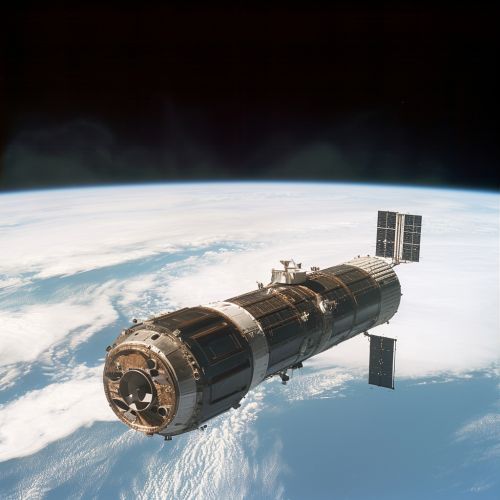Skylab
Origins and Development
Skylab was a space station launched and operated by National Aeronautics and Space Administration in the 1970s. Its origins can be traced back to the 1960s, when NASA began to explore the feasibility of long-duration human spaceflight. The agency's Apollo lunar program was already in full swing, and scientists were eager to understand the effects of extended periods in space on the human body. To this end, they proposed the creation of a space station that could serve as a laboratory for these studies.


The development of Skylab was a significant undertaking, involving numerous technical challenges. The station was designed to be habitable for up to 90 days at a time, requiring systems for life support, waste management, and environmental control. It also needed to be equipped with scientific instruments for conducting research, as well as communications equipment for maintaining contact with ground control.
Launch and Operation
Skylab was launched on May 14, 1973, atop a Saturn V rocket. The launch was not without problems; during ascent, the station's micrometeoroid shield and one of its solar panels were torn off, causing a critical loss of power and threatening the viability of the mission. However, the first crew was able to perform repairs after their arrival, saving the mission and enabling Skylab to fulfill its scientific objectives.
Over the course of its operational life, Skylab was occupied by three separate crews, known as Skylab 2, Skylab 3, and Skylab 4. These missions lasted for 28, 59, and 84 days respectively, setting new records for human spaceflight duration. The astronauts conducted a wide range of experiments, studying everything from solar astronomy to the physiological effects of long-term spaceflight.
Scientific Discoveries and Achievements
The scientific research conducted aboard Skylab yielded a wealth of new knowledge. In the field of solar astronomy, the station's solar observatory, known as the Apollo Telescope Mount (ATM), made numerous important observations. These included detailed measurements of solar flares and the discovery of coronal holes, regions of the sun's outer atmosphere where high-speed solar wind particles are emitted.
In the realm of human physiology, the Skylab missions provided valuable data on the effects of long-duration spaceflight on the human body. The astronauts conducted experiments on themselves to study changes in bone density, muscle mass, and cardiovascular health, among other things. This research has been instrumental in shaping our understanding of the challenges faced by astronauts during long space missions, and has informed the design of countermeasures to mitigate these effects.
Decommissioning and Legacy
Skylab was decommissioned in 1974, after the conclusion of the Skylab 4 mission. The station remained in orbit for several more years, eventually reentering the Earth's atmosphere in 1979. The reentry was a significant event, with pieces of debris landing in the Indian Ocean and parts of Western Australia.
Despite its relatively short operational life, Skylab left a lasting legacy. It demonstrated the feasibility of long-duration human spaceflight, paving the way for later space stations like Mir and the International Space Station (ISS). The scientific data it collected continues to be valuable to researchers, and its successful repair and salvage after the initial launch failure is often cited as a testament to human ingenuity and resourcefulness in the face of adversity.
